 by Pieter Thomassen and
Peter Walker, with help from Joshua McClellan.
by Pieter Thomassen and
Peter Walker, with help from Joshua McClellan.
| | | | | |
Liberator Class Super Dimensional Battlefortress
(also designated as Shadow Dimensional Battlefortress)
|
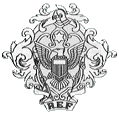
|
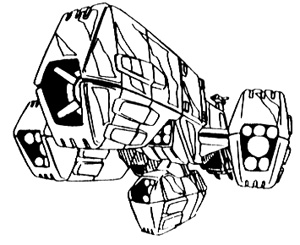
|
 |
 |  |  |  |  |  |
Names and disposition:
| SDF-04 | | UES Liberator | Commissioned in 2044 | In service, Home Fleet. |
| SDF-05 | | UES Scorpio | Under construction | Suspended 2044, 58% complete |
| SDF-06 | | < no name assigned > | Planned | - |
Ship's complement:
- Ships' crew & task force staff (5,000 men),
- Air group (3,400 men),
- Life support limits are for a full combat complement and about 140,000 supernumaries (~150,000 men total). Note: normally, only 8,400 men crew these vessels.
Dimensions:
- Length: 1305 m over all.
- Height: 628 m over all.
- Width : 575 m over all.
- Mass : 54,000,000 metric tons, operational (typical).
- Fuel Mass: 6,100,000 metric tons, maximum (typical).
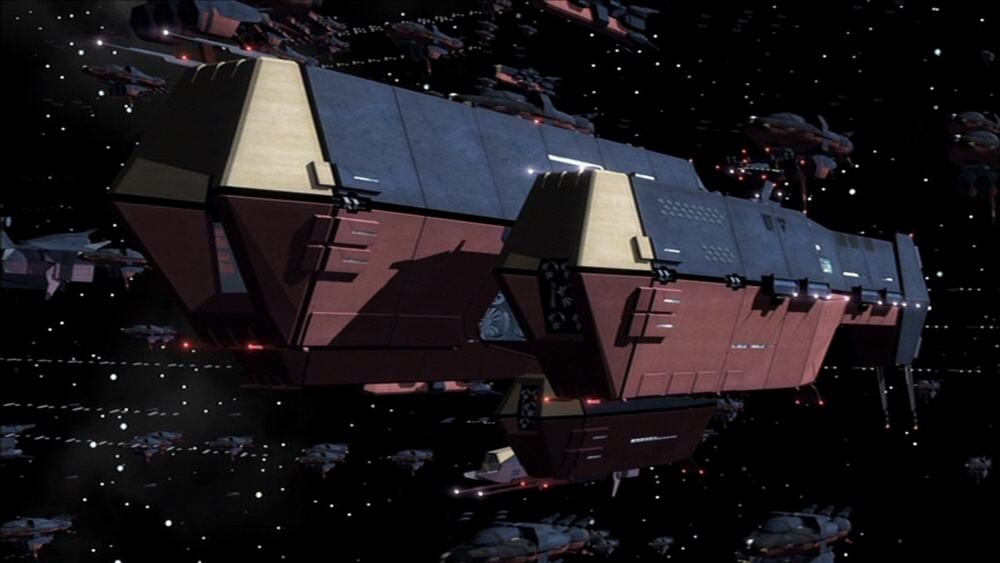
Propulsion systems:
- Main power system: RRG mk 15 protoculture-fueled Reflex furnace cluster. The powerplant of the Liberator-class vessel can deliver up to 96.7 Petawatts of power, and can operate for ninty-four minutes at maximum power before overheat initiates autoshutdown.
- Maneuvering Thrusters (24): Fusion-plasma reaction thruster clusters mounted on the forward dorsal and ventral corners of the central and side bodies, ventral forward and aft corners of the lower body, dorsal and ventral surfaces of the connective sections between central and side bodies (two per side per orientation), two per side of the central body, and two
per outer side of the side bodies.
- Reaction-mass Thrusters (62): Rolls-Royce Peregrine Mk8 Fusion-Plasma Reaction Thrusters with protoculture energizer. These engines are mounted in eleven clusters.
Thrusting aft are 38 engines; one cluster of eight engines and two of six in the stern of the central and side bodies, augmented by one cluster of six engines in the upper aft body and one in the lower body, and two triple clusters in the lower side bodies.
Thrusting forward for deceleration are 24 engines; two clusters of six, one in the lower central body and one in the lower body, and two clusters of six in the side bodies.
Due to the large number of primary thrusters, no secondary thrusters are installed into these vessels.
Notes on the engine system: The lower body engine clusters (forward and aft) are too far off-center to be used unless the main aft thruster clusters are also used in an off-centerline burn to retain stability.
The other off-center engines aft (upper central and lower side body clusters) must be used in conjunction with one another or with off-centerline firing main clusters lest the ship destabilizes.
The central upper aft engine cluster fires its exhaust along the control tower stem, which is armored specifically against the abuse. The central lower forward cluster fires against the forward part of the central hull, which is also specially treated against this. However, these thruster clusters must burn at lower temperatures and efficiency regardless to prevent burn damage to the ship.
- Anti-gravity System (1): 76 RRG Cyclops anti-gravity pods.
- Space Fold (1): RRG (Robotech Research Group) Mk12 spacefold. This system can generate a spherical fold bubble and can transport 30 to 40 subluminal ships in its fold radius.
- Planetary Capabilities: The Liberator-class has minimal atmospheric capabilities through its reaction thrusters and anti-gravity system. However, maximum speed and maneuverability are extremely low and extreme care must be taken not to overstress the hull structure.
The ships' lower body has insufficient strength to let the ship land on it. Because of this, a 'cold' landing is not possible on open ground without crushing this section. While landed, the battlefortress must operate her antigravs at -99% local g at all times to prevent damage to the lower body. With the lower body detached, a 'cold' landing can be made, given a sufficiently hard underground (such as granite).
As the ship will float, an oceanic landing is the preferred landing method, though the lower body will be inaccessible save through the central section of the ship.
The lower body is detachable and capable of supporting its own weight on a planetary surface.
Endurance and mobility limits:
- The dry stores endurance is limited to about 12 years with a full crew complement, assuming no mining and subsequent replenishment, which the Liberator is capable of doing. The on-board life support and recycling system is based on a double installation of the Macross-class systems, and the very extensive recycling installations ensure that only incidental biomass losses need to be replenished. Water stores are recycled almost completely. The hydroponics installations on board provide the crew with a steady supply of fresh foods, and much is exported to smaller ships in the fleet.
The Liberator has never been strained to the limits of her life support capabilities, and the normal crew on board (8,400 men) could have been supplied for the duration of the Liberators protoculture supplies.
- The heavy ship launched missiles have magazines designed to last for two major battles or numerous smaller skirmishes.
- The mecha consumables supplies (mainly missiles) are very extensive, and can sustain continuous combat operations for over forty days against the Invid by the ships' own forces.
- The Reflex furnace can function for about 40 years at normal usage levels before an energizer rebuild is necessary, provided sufficient protoculture is available.
- At full power, the main propulsion systems can produce up to 1.32 Teranewtons of thrust at a minimal reaction mass efficiency profile, or as little as 46.2 Giganewtons of thrust at a maximum efficiency setting. At lower power levels, these thrusts are commensurately smaller.
- At full power, the Liberator-class can achieve a maximum delta-v of 209 kps at the cruising acceleration of 0.1 gees, a maximum delta-v of 41.6 kps at the battle acceleration of 1.0 gees, and a delta-v of at most 11.6 kps at the flank acceleration of 2.5 gees. At lower power levels, these ranges are commensurately smaller.
- The fold system is not navigationally guaranteed for any single jump beyond 10 kiloparsecs. If longer voyages are required, the ships must conduct multiple successive fold jumps.
- The maximum sustained atmospheric speed is limited to subsonic values. During a re-entry, the Liberator-class must reduce its speed to subsonic velocities well in the stratosphere, or risk destabilization by its own supersonic shock wave in the lower atmosphere.
The maximum hover time on the anti-gravity systems is limited only by the protoculture supplies and maintenance requirements. However, large atmospheric environmental stresses may cause warping of inter-hull connections and should be
avoided whenever possible.
If the ship touches down in an oceanic environment with the lower body attached, care must be taken that the current differential between the lower and central bodies does not exceed 5 knots. Otherwise, stresses may cause warping of the hull connections. For this reason, hydronic landings in this condition are usually made in deep inland lakes. This does of course limit the number of possible touchdown sites, as the lower body has a very deep draft and few lakes on any world qualify.
With the lower body detached, the central and side bodies can withstand current pressures of up to 10 knots in any direction. Should the environment exceed these limits, the ship must be laid stern-on to the current.
Weapon systems:
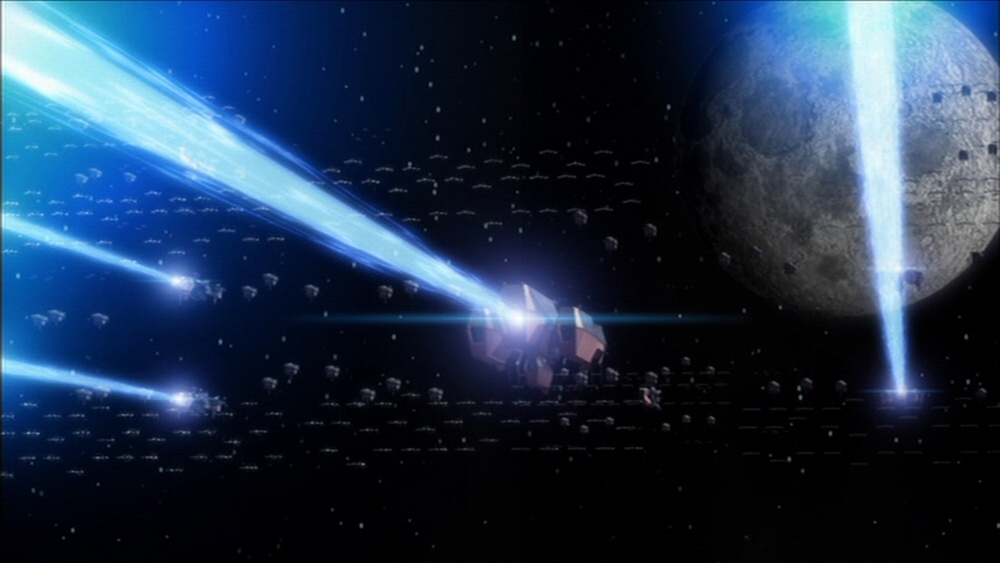
- RRG Synchro Cannon Mk.3 (1): This heavy weapon has an effective range of 150,000 km; at full power it has the effective yield of a 20 MT fusion weapon. Unlike the Zentraedi Monitor, or the Macross battlefortresses and their derivatives, this weapon, based upon the most up-to-date Haydonite technologies, does not require a split-boom hull construction. The weapon is located in an aperture in the central forward body.
The actual rate of fire remains classified but is significantly faster than a Reflex Cannon, leading to a higher delivered megatonnage despite the lower intensity of each salvo.
- Bofors RL39 Triple Particle Beam Turrets (28). The Liberator carries a fully enclosed version of the heavy RL36 turret also mounted on the Garfish class light cruisers. These excellent weapons deliver 6000 MJ of particle energy per turret per salvo. They are mounted on the upper central hull (8), two groupings of two turrets to either side, and on top of the side bodies (8 each), in a same grouping. Additionaly, an additional 8 turrets are carried under the central hull, in retractable housings arranged in a pattern like the upper gun turrets. The cannons can fire once every three
seconds at their maximum discharge rate.
- Mk. 410 heavy missile tube (72).The Liberator's heavy missile batteries are mounted on the upper side bodies, in three rows of eight tubes with three rows of four tubes below those. The tubes can launch virtually any of the standard REF anti-ship missiles, including the heavy Skylord weapons. Apart from the 72 ready missiles, magazines with sufficient space for 144 skylord missiles or a smaller number of smaller missiles are located inboard of the launchers.
- PL-2db double barrelled Point Defense turrets (46): Mounted on the deck edges of the side bodies (16), lower body (4) and the central body (24), these standard REF weapons can fire 132 MJ of pulsed particle energy four times per second.
Air group and mecha complement:
- Approx. 650 VF-6 Alphas/VQ-6S ASAVANs(*),
- Approx. 230 VF-12 Betas,
- Approx. 24 Elint Legioss Recon planes,
- Approx. 24 EC-32 Eyrie EWACS shuttles,
- Approx. 10 SC-32 Gossamer heavy personnel and cargo shuttles,
- Approx. 50 RC-4 Rabbit light personnel and cargo shuttles.
Notes:
The Liberator class, like the Macross-class before them, has a large and voluminous cargo capacity and is capable of carrying thousands of additional mecha and troops in its cavernous storage bays. However these forces are basically passengers and will require some preparation before they can be launched from the battlefortress.
In 2044, The Liberators' Alpha and Beta complements were partially equipped with VF-6X Alpha Shadow Fighters, VF-12X Beta Shadow Fighters and VQ-6X ASAVAN Shadow Drones prior to her departure for Earth.
The Cyclone number includes mecha pilot emergency Cyclones, any ground forces aboard and reserves.
Electronics:
- DS-3 Barrier Defense System: An advanced forcefield system which covers the full four pi steradians around the ship with a yellow-greenish forcefield (or if desired, only part of the ship). This field will stop all solids and directed energy weapons (except lasers through a narrow band). However, excess energy which cannot be shunted from the field will be stored in the main gun capacitators. The storage wattage is high but not infinite, and when the barrier overloads the field will discharge the stored energy particles. This discharge will have the force of a high-yield (>45 MT) fusion bomb. However, as the discharged energetic particles' vectors will be away from the field and its generating vessel, the vessel will survive, though it will suffer severe damage to its internal electronics and power systems, and will not be battle-worthy until repairs are made.
- DS-1 Pinpoint Barrier Defense System: Uses four movable disks of force field, conformal to the ship's surface, to repel light torpedo attacks, or particle beam fire. It serves as a back up to the DS-3 system.
- The class was fitted with a Shadow stealth device, however, due to recent events, the status of this system on board the Libetrator is not known. It is not yet clear whether it will be removed during refits or whether new ships of thiss class will mount them at all.
- A large Protoculture detector, capable of detecting and identifying Invid energizer configurations at distances of over 20 AU was installed in this class. The distributed antenna are mounted in blisters on the forward halves of all hull sections.
Design notes:
The Liberator design is distantly inspired by the philosophy that yielded the Ikazuchi-class large cruisers. The main body of the vessel retains the 'brick on its side' shape for much of its length, though it can be divided into two sub-sections: A narrow, aft central section containing the central engines and anchoring the command tower, and an enlarged and heightened forward cannon section. In addition, three additional modules are attached; two connecting by a long plane to the two sides of the central body, directly to the central engine block, and one to the keel. At the front of the central body the syncro cannon is mounted.
In addition, the forward subsection of the main body shields much of the vessel from return fire, and the side bodies shield the aft main body from flanking maneuvers. At normal battle attitudes (nose on), the Liberator's vital aft central body is usually only exposed on its top and bottom sides, and only in a very limited way forward of the engine blocks. This all combines (because of the ships' attitude) to make the central section the least vulnerable section of the ship.
The lower body contains the hangars, as well as many cargo bays, to facilitate unloading. Any troops being transported are quartered in other sections of the vessel, and the lower section has an independent anti-gravity engine block to enable it to make planetary landings, although to date this has not been used as such.
The command citadel is located on top of a tower that rises above the main hull, above the aft central engines. The Flag Bridge is located in this citadel.
Hangar decks and crew spaces are distributed through the central and side bodies as well, though most fighter mecha are launched from the side bodies. This includes no less than sixteen (in eight double housings) versions of the quick-launch bays first used on the Ikazuchi. There are two large Horizont bays located in the side bodies, just forward of the side aft engine sections. They are closed by large trapezoidal shutter door in the upper deck, and capable of a high turn-around rate on the shuttles.
History:
The origin of the Liberator class Battlefortress lies in 2034, after the Expeditionary Forces had send most of their active combat units first to reinforce Earth against the Robotech Masters, then against the initial Invid attack. During those events, most large capital ships were destroyed or heavily damaged, and a new battlefortress type was authorized, the large SDF-4 Liberator class.
The class was seen as the follow-up to the SDF-3 Pioneer design, which had several known weak points, such as too little generating power for its main armament. Since the new class did not have to conform to a known Tirolian ship class, the designers were given a free hand, and after five years of design work, the final result beared little resemblance to the first three RDF battlefortresses.
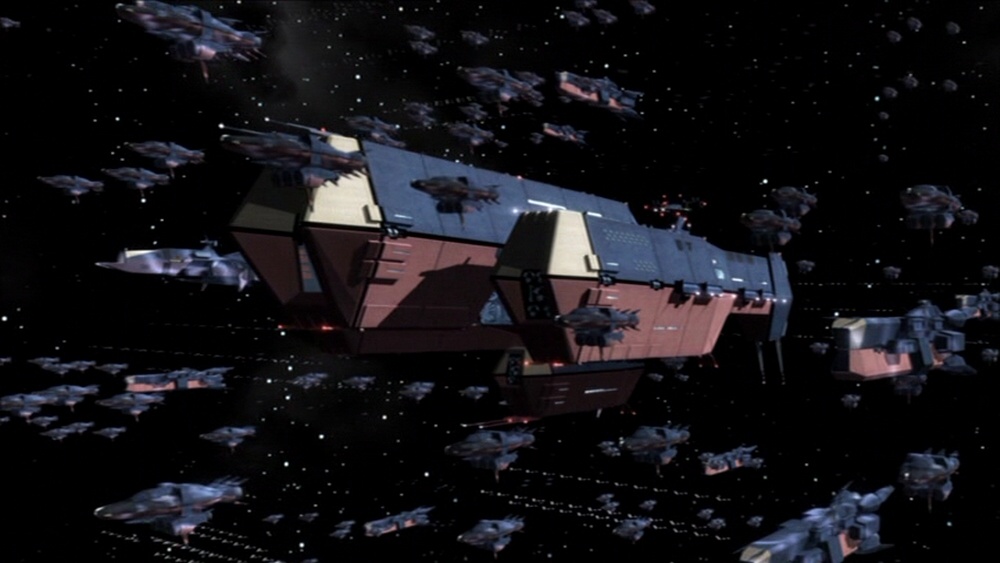
Initially the class was to be equipped with a large reflex cannon up front like the SDF-1 and SDF-3 Pioneer, and the first of the class, to be named Izumo, was to be laid down in 2036. However, resource bottlenecks lead to a delay and by the time there was enough room in the construction program for the new class, the Haydonites had made Syncro cannon technology available.
This new main gun technology gave less powerfull individual salvos, but could fire much faster than the large Reflex cannon the REF was used to. This setup was better suited for anti-ship attack as both cannons had sufficient power to destroy any conceivable ship and thus the Syncro cannon's higher firing rate could take out multiple targets where a Reflex cannon could fire only once. An additional advantage was the more compact Syncro cannon installation, which did not require the entire forward hull to open up for firing, simplifying construction.
At the same time as the main armament redesign was taking place, the class was renamed the Liberator class. To save time, the Syncro cannon was fitted in the place where the Reflex cannon would have been, and the freed space was given other uses, but this resulted in a larger ship than would have been strictly necessary for the armament, as the Shimakaze class battlecruisers would later show. In addition, the heavy secondary and missile armament as well as large cargo requirements resulted in the heaviest and largest ship yet built by Earth forces, rivaling the Zentraedi Thuverl Salan cruiser in volume and mass.
The construction of the first of the class, the Liberator, began in late 2041 in the Tirolian shipyards, with the next vessel, the Scorpio, following one year later. The SDF-4 Liberator completed in 2044, too late to join the ill-fated Mars Division attack of 2042. She participated in the final battle of the Third Robotech War. The second ship of the class, the SDF-5 Scorpio, was just over half way complete when construction was suspended following the events after the Invid departure. For the third vessel of the class, as yet unnamed, numerous long lead construction items were ordered, but production had not yet officially begun when it was suspended pending a possible redesign to less compromised technologies.
See additional design notes.
Return to REF Naval index.
Go to Robotech Reference Guide Home Page.
Robotech (R) is the property of Harmony Gold. This document is in no
way intended to infringe upon their rights.
Content by Pieter Thomassen and Peter Walker
HTML by Robert Morgenstern (rmorgens@ieee.org)
Copyright © 2001, 1999, 1997 Robert Morgenstern, Pieter Thomassen, Peter Walker






